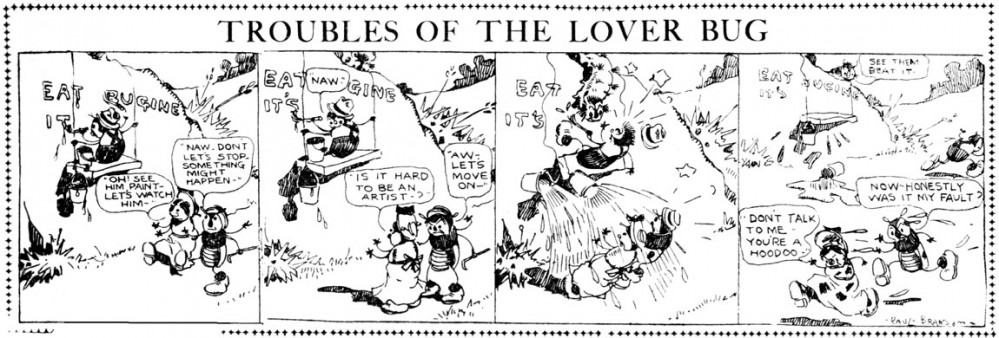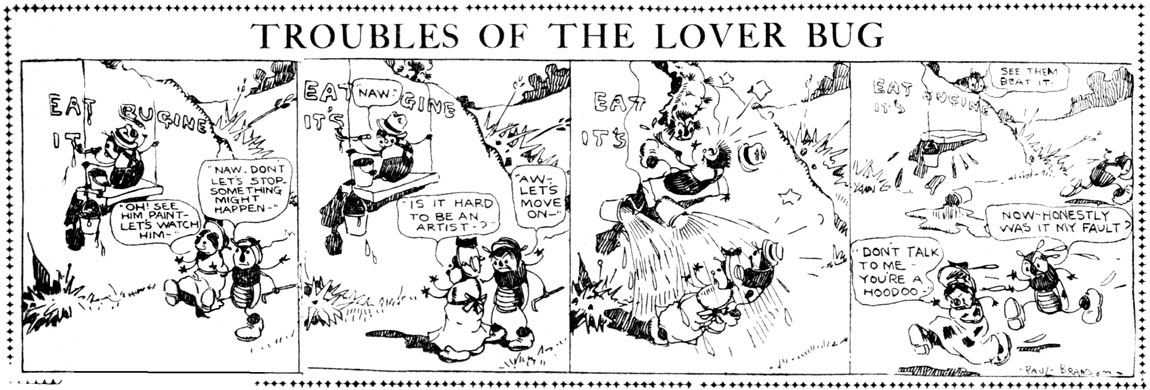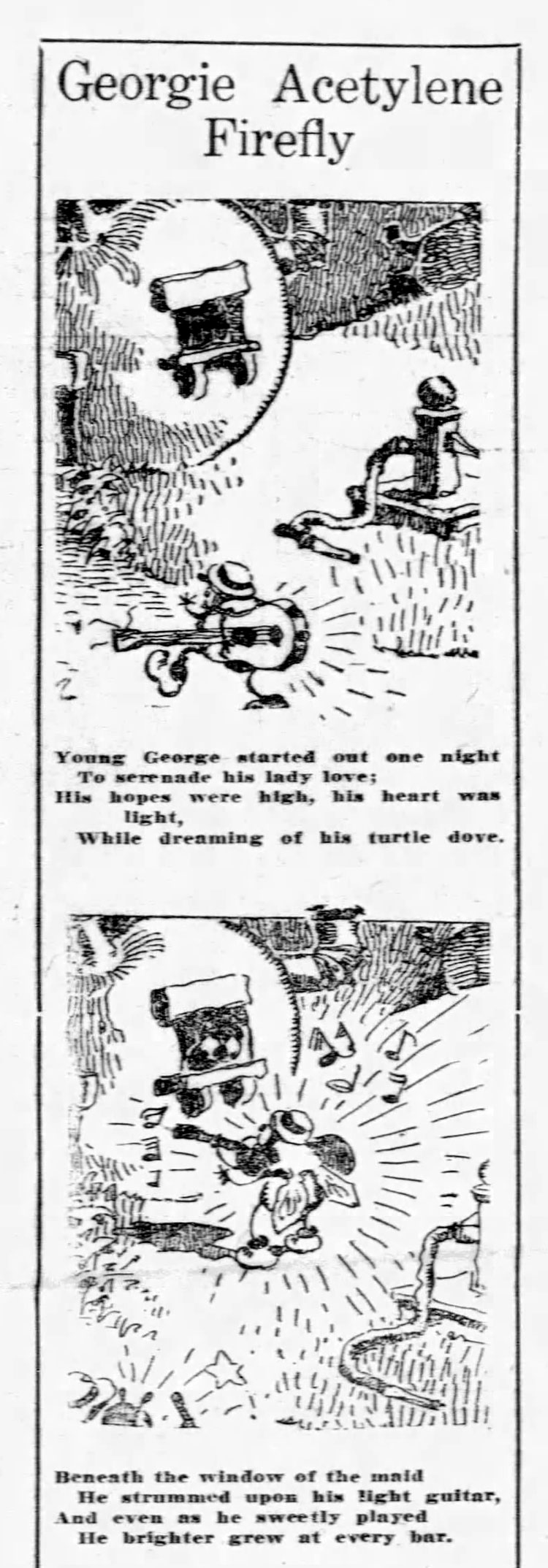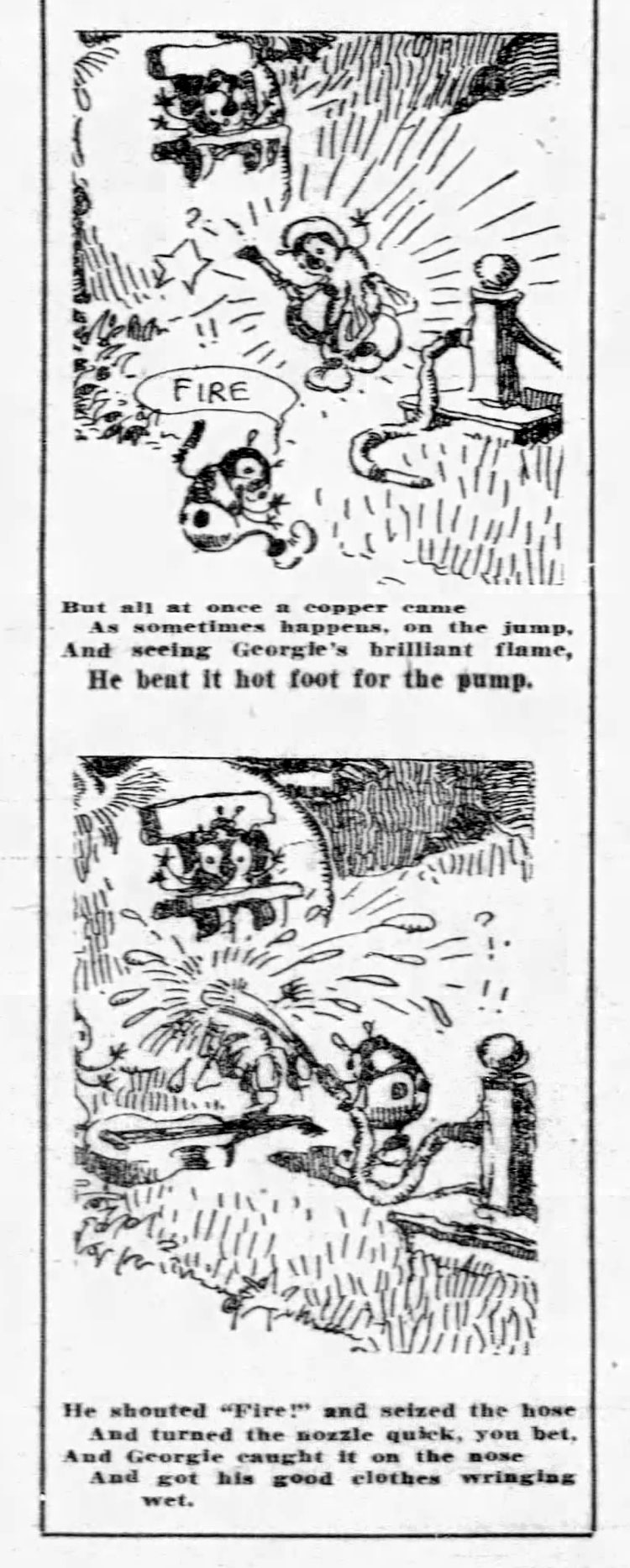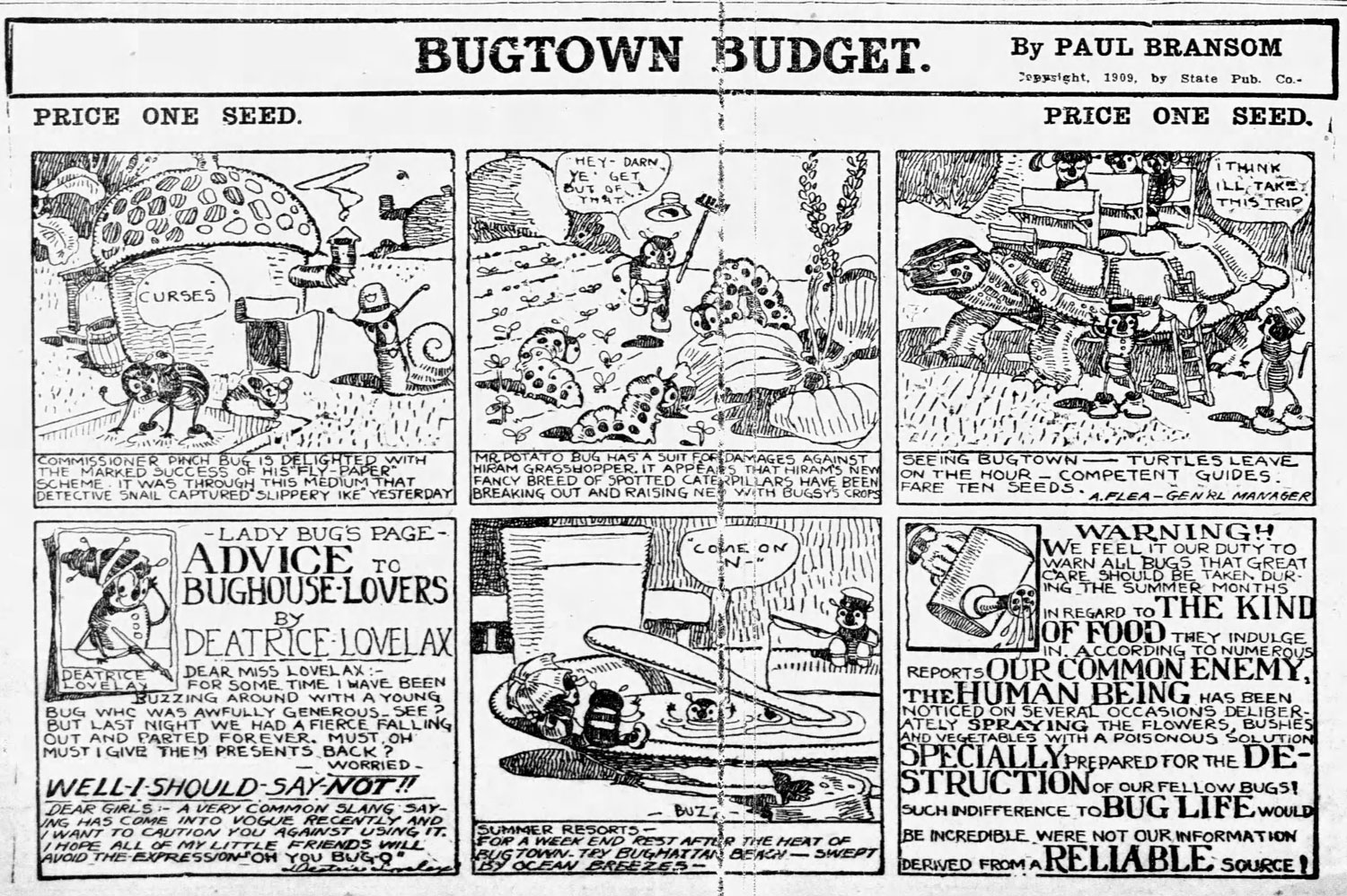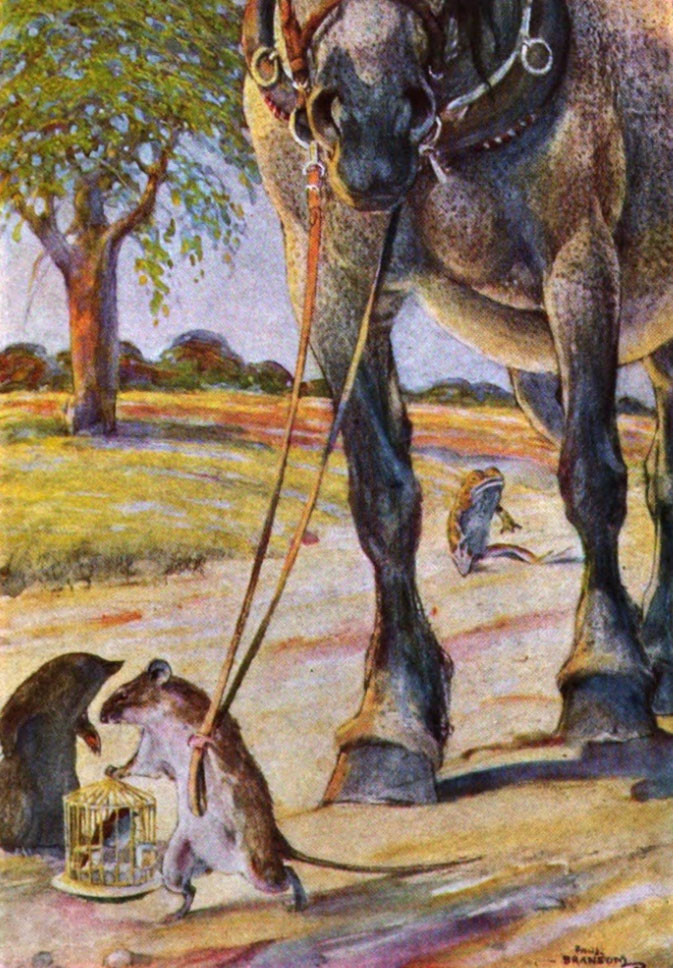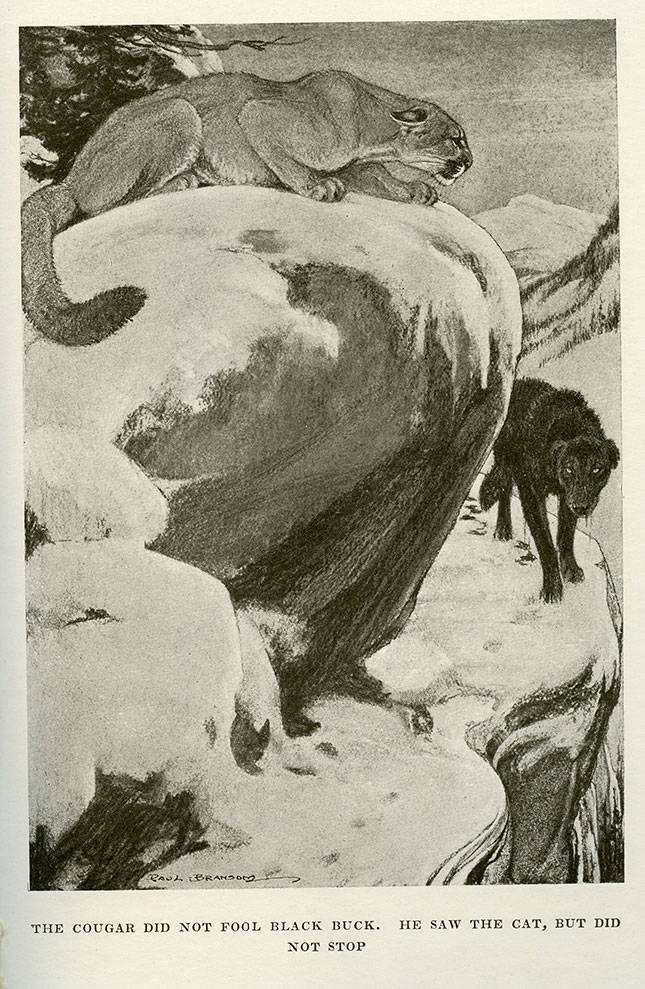Paul Bransom was an early 20th-century animal and wildlife artist, whose reputation as painter and illustrator earned him the nickname "Dean of Animal Artists". Prior to his career as book illustrator, he worked as a cartoonist, producing the feature 'In Bugville' (1903-1906) for the New York Evening Journal, about little insects living in a human-like society.
Early life and career
Paul Bransom was born in 1885 in Washington, D.C. As a child, he trained his artistic skills by drawing the animals in his backyard at at the National Zoo. At age 13, he left school and became an apprentice draftsman at the United States Patent Office. There, he helped make drawings of all sorts of devices that inventors were seeking patents for. Afterwards, he found an artist job with the Southern Railway, where he made construction drawings of railroad rolling equipment, from steam engines to freight trains. At age sixteen, Bransom answered an advertisement in a Washington newspaper for a job as draftsman with the General Electric Company in the city of Schenectady, New York, and was accepted. In the following year, he moved further to New York City, where he began his cartooning career.
'Georgie Acetylene Firefly' (The Spokesman Review, 10 September 1905).
Cartoonist
In June 1903, Joseph Pulitzer's New York World ran two strips of Bransom's cartoon feature 'Lightning Larry The Messenger Boy'. After that, he found a job with William Randolph Hearst's New York Evening Journal, where he worked in the art room alongside cartoonists like Richard Outcault and Rudolph Dirks. From 1904 on, Bransom created several short-lived cartoon features for the Journal, including 'Just Coons' (14-27 April 1904), 'Aesop's Fables Upside Down' (1-21 October 1904), 'Just Woozy' (30 January - 27 April 1905) and 'Spooks' (9-27 February 1905).
Bugville
However, Bransom's main body of work was the reboot of 'Bugville', a cartoon feature with the latest news from a miniature insect society. Between 1900 and 1902, the original 'Bugville' was created by Gus Dirks, but the series had been on hiatus since the cartoonist's suicide. On 7 October 1903, Bransom's version of the feature began its run on weekdays. Initially appearing under the title 'In Bug House', the feature ran under a variety of titles over the years, including 'Bugville Nursery Rhymes' and 'Items From The Bugville Bugle'. In 1906, Bransom focused on one particular member of the bug society, and the final running title became 'Troubles of the Lover Bug'. The series ended on November 20 1906. Between 11 August and 8 September 1905, Dirks also made the short-lived spin-off 'Georgie Acetylene Firefly'.
Between 18 January and 10 July 1909, Paul Bransom produced his final cartooning work, when he revamped his old feature in the Boston Traveler under the title 'Bugtown Budget'.
'Bugtown Budget', published on 17 June 1909 in The Toronto Star through the Boston Traveler's State Publishing Company syndicate.
Wildlife illustrator and painter
In 1906, still at the tender age of 21, Bransom left the Evening Journal and turned to making illustrations for books and magazines. By 1907, he made his first covers for the Saturday Evening Post, and quickly became widely known for his wildlife drawings. In the next couple of decades, Bransom's animal illustrations appeared with articles and stories published in American Legion Magazine, The Elks Magazine, Youth's Companion, Ladies Home Journal, St. Nicholas, The Outlook, Century, Cosmopolitan, Country Gentleman, The Windsor Magazine and Good Housekeeping. His talent for this genre was first recognized while creating studies of the animals at the Bronx Zoo. Zoo director Dr. William T. Hornaday provided the artist with a studio in his Lions House for many years. For fifteen years, Bransom also studied and painted animals in Grand Teton National Park in Jackson Hole, Wyoming, and was senior instructor of Teton Artists Outdoor School there.
One of his first book assignments was making illustrations for a new encyclopedia published by Dodd, Mead & Co. Over the next couple of decades, Bransom illustrated a great many more books, both fiction and non-fiction. His art appeared in editions of Rudyard Kipling's 'Just So Stories' (Country Life Press, 1912), Kenneth Grahame's 'The Wind in the Willows' (C. Scribner's Sons, 1913) and Jack London's 'Call of the Wild' (The MacMillan Co., 1916), as well as the story collection 'An Argosy of Fables' (Frederick A. Stokes Co., 1921). In 1939, he provided the illustrations for the picture book 'Animals of American History' (Frederick A. Stokes Co., 1939) and in 1954 also for 'Marlin Perkins' Zooparade' (Rand Mcnally & Company, 1954), based on the educational TV program of the same name. From the late 1940s to the early 1960s, Bransom was a regular contributor to the Seagram's Sportsman Calendars.
Illustration for 'The Wind in the Willows'.
Recognition
In 1976, Bransom received the Benjamin West Clinedinst award for distinguished achievement of the Artists Fellowship, which he had helped form in 1925. In 1974, the Weber State College of Ogden, Utah, conferred the degree of honorary Doctor of Arts on him. Bransom additionally served as president of the Society of Animal Artists, and remained honorary president until his death. In March 1979, the society also presented him with the Award of Merit Medal.
Personal life and death
From 1907 until her death in 1963, Bransom was married to Broadway actress Grace Bond. The couple spent their summers in their studio at Canada Lake in the Adirondacks, where they were part of a small colony of artists, writers and movie makers, which also included illustrator James Thurber. While initially taking part in all the lavish parties, Paul and Grace Bransom eventually became very religious, and spent the rest of their lives as teetotallers.
In old age, Bransom remained a resident of New York City, where he continued to paint in his West 67th Street studio until failing eyesight forced him to quit one year before his death. In his final years, he turned to painting flowers and still lifes that did not require the precise detail and accuracy of animals. On 19 July 1979, Paul Bransom died during a visit to Quakertown, Pennsylvania, only a few days before his 94th birthday.
Illustration by Paul Bransom for 'The Fang in the Forest' by Charles Alexander (Dodd, Mead & Co., 1923).


